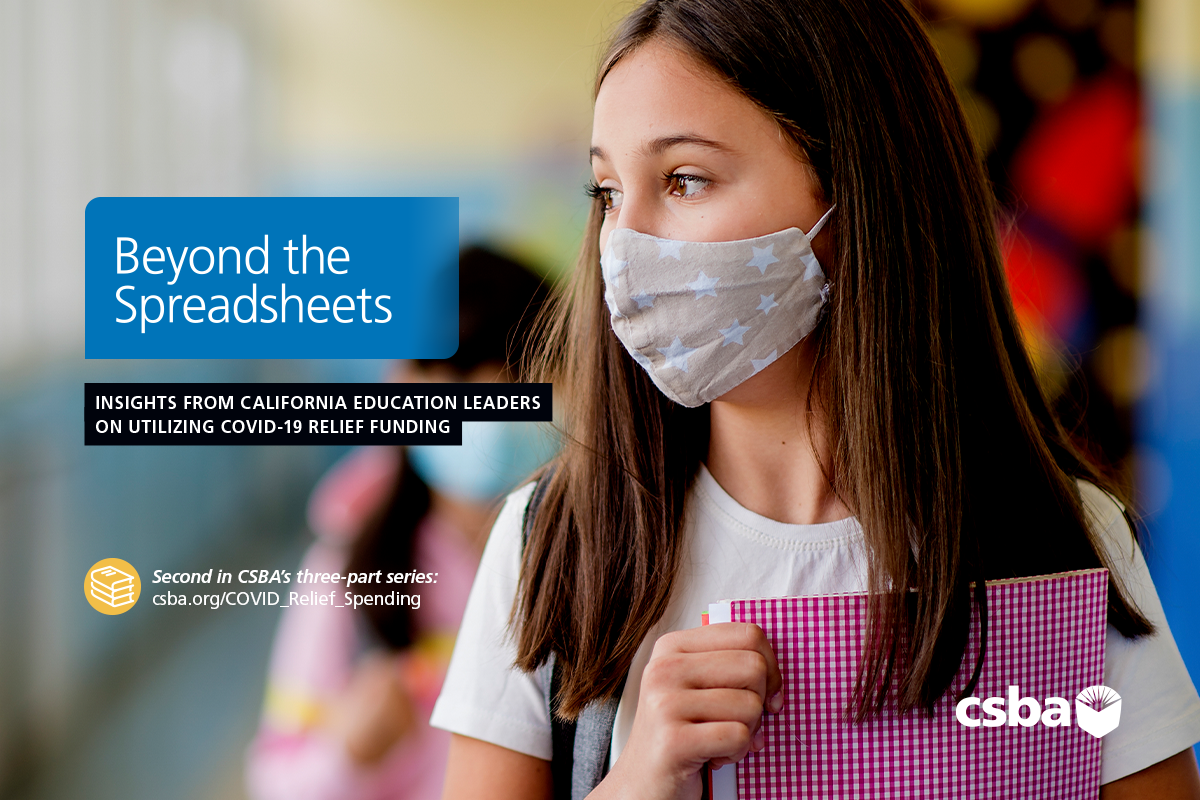CSBA is following up on its recently released COVID relief funding reports, Beyond the spreadsheets: Insights from California education leaders on utilizing COVID-19 relief funding and Unprecedented times, unprecedented responses: An analysis of federal COVID-19 relief fund spending in California public schools, with resources that local educational agencies can use to inform further spending.
Beyond the spreadsheets covers results from a CSBA survey of superintendents and school business officials on implementation strategies, challenges and their perspective on local needs and constraints. The survey had 239 respondents from school districts and county offices of education across the state that represent 23 percent of California’s K-12 public school enrollment.
The survey explored topics including mental health supports, staffing, professional development, expanded learning opportunities, community outreach, infrastructure and capital outlay and more. Among the findings are that school leaders faced significant challenges in spending and planning to spend emergency relief funding. Reasons for these challenges range from difficulties surrounding creating initiatives and programming when funds are one-time to staffing issues to supply chain delays or shortages.
There are a number of resources available to help LEAs plan how they will allocate remaining funds.
In partnership with the California Department of Education, WestEd participated in three interactive online sessions covering how LEAs can use one-time funds in collaboration with long-term resources to fast-track equitable learning opportunities and supports, which can be accessed here. Pre-recorded sessions, coaching tools and takeaways to support maximizing investments for students, addressing staffing needs and achieving sustainability are included.
In summer 2021, WestEd, a nonpartisan, nonprofit research, development and service agency, also released a four-part series of policy briefs on how federal relief aid can be maximized to support more equitable student learning and providing strategies for using one-time federal funding on school staffing, investing one-time federal relief aid to make a lasting difference, and for getting federal relief aid to students who need it most.
The Education Trust released an analysis titled How states can use American Rescue Plan funding and federal grants to support teacher diversity in October 2022.
Federal resources
In August, the U.S. Department of Education released resources on supporting learning acceleration and on addressing the teacher shortage using American Rescue Plan funds.
The department also has an #ARPStars communications toolkit, last updated in March, available for local educational agencies and schools with examples of how to share how they’re using federal COVID relief funding on social media, through video storytelling and via traditional media. The #ARPStars campaign aims to highlight how the education community is using ARP funds to give students, teachers and families the resources they need to succeed.
On Sept. 29 the Education Department’s Office of Elementary and Secondary Education announced the release of a liquidation extension request template for Coronavirus Aid, Relief, and Economic Security (CARES) Act Elementary and Secondary School Emergency Relief (ESSER) and Governor’s Emergency Education Relief (GEER) funds. Sept. 30 was the deadline to obligate CARES Act funds. The Education Department, acknowledging that some grantees may need flexibility in liquidating CARES Act funds, is offering the extension request, which would allow for an additional 14 months past the 120 days currently allotted to liquidate the money. The request should be submitted by Dec. 31, 2022, to avoid potential disruptions to accessing CARES Act funds, but can be submitted after that date as well.





